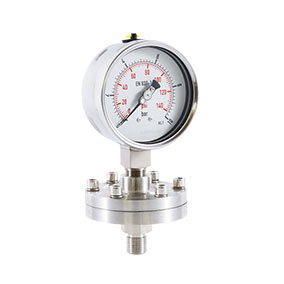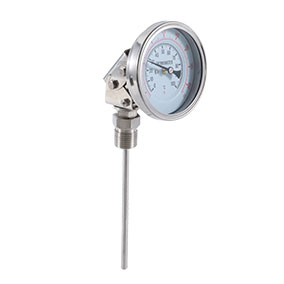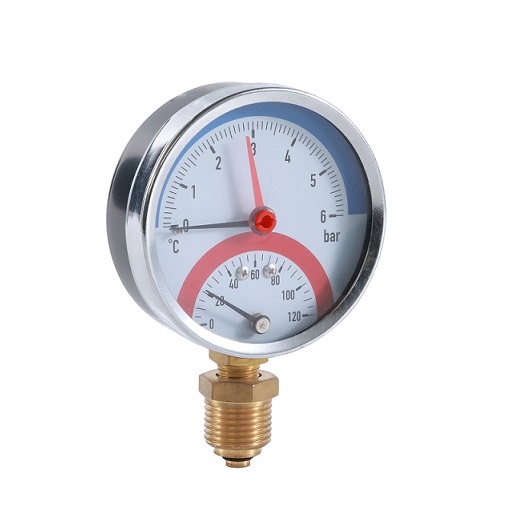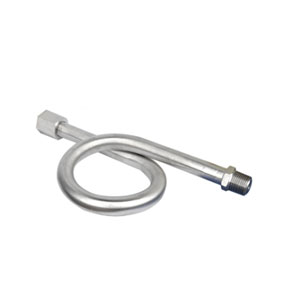Common Issues with Hydraulic Pressure Gauges and How to Troubleshoot Them
Hydraulic pressure gauges are critical components in many industrial and mechanical systems, providing essential insights into the operating conditions of hydraulic machinery. However, like any mechanical device, they can encounter issues that affect their accuracy and reliability. Understanding these common problems and knowing how to troubleshoot them is crucial for maintaining optimal system performance. In this article, we will explore some of the typical issues that arise with hydraulic pressure gauges and provide practical troubleshooting tips.
1.Inaccurate Readings
One of the most frequent issues with hydraulic pressure gauges is inaccurate readings. This can occur due to several reasons:
Possible Causes:
*Mechanical Damage: Physical damage to the gauge, such as dents or cracks, can affect its internal components.
*Clogging: Accumulation of dirt, debris, or contaminants in the gauge's sensing mechanism can disrupt pressure readings.
*Improper Calibration: Incorrect calibration during installation or over time can lead to inaccurate measurements.
Troubleshooting Tips:
*Inspect for Damage: Check the gauge for any visible signs of damage. Replace the gauge if necessary.
*Clean the Gauge: Remove the gauge from the system and clean it thoroughly to remove any debris or contaminants.
*Calibration Check: Verify the gauge's calibration using a certified calibration device. Adjust or recalibrate as per manufacturer's guidelines.
2.Fluctuating Readings
Another common issue is fluctuating pressure readings, which can make it difficult to accurately monitor system performance.
Possible Causes:
*Air Bubbles: Air trapped in the hydraulic fluid can cause pressure fluctuations.
*Loose Connections: Loose fittings or connections in the hydraulic system can lead to intermittent pressure changes.
*Pulsation Dampening Issues: Inadequate or malfunctioning pulsation dampeners can result in fluctuating readings.
Troubleshooting Tips:
*Bleed the System: Remove air from the hydraulic system by bleeding it thoroughly.
*Check Connections: Inspect all connections and fittings for tightness and leaks. Tighten or replace fittings as necessary.
*Inspect Pulsation Dampeners: Ensure that pulsation dampeners are functioning correctly and are properly sized for the system.
3.Gauge Not Responding
Sometimes, a hydraulic pressure gauge may fail to respond at all, showing no change in pressure readings despite system operations.
Possible Causes:
*Blocked Pressure Port: The pressure port where the gauge is connected may be blocked or obstructed.
*Faulty Sensor: Internal sensor issues or sensor failure can cause the gauge to stop responding.
*Electrical Problems: For electronic gauges, issues with power supply or wiring can prevent proper functioning.
Troubleshooting Tips:
*Clear the Pressure Port: Ensure that the pressure port is clear and free from any blockages or debris.
*Test the Sensor: Check the sensor's functionality using appropriate diagnostic tools. Replace the sensor if it is faulty.
*Inspect Electrical Connections: For electronic gauges, verify the power supply and check wiring connections for any faults.
4.Vibration or Shock Damage
In environments with high vibrations or shocks, hydraulic pressure gauges can suffer damage that affects their accuracy and lifespan.
Possible Causes:
*Vibration: Continuous vibration from nearby machinery or operations can cause internal components to loosen or malfunction.
*Shock: Sudden impacts or shocks can physically damage the gauge or its sensitive parts.
Troubleshooting Tips:
*Isolate the Gauge: Mount the gauge on vibration-dampening materials or isolators to reduce exposure to vibrations.
*Protective Enclosures: Use protective enclosures or guards to shield the gauge from physical impacts or shocks.
Maintaining the reliability and accuracy of hydraulic pressure gauges is essential for ensuring the efficiency and safety of hydraulic systems. By understanding these common issues and employing effective troubleshooting techniques, operators and maintenance personnel can address problems promptly and prevent costly downtime. Regular inspection, proper installation, and adherence to manufacturer's guidelines for maintenance and calibration are key to maximizing the lifespan and performance of hydraulic pressure gauges in industrial settings.
Got Questions? Let Us Help!
Ma anshan Exact Instrument Co., Ltd. es una empresa internacional fabricante de manómetros. Our company is mainly engaged in the design, production and sales of instruments, instrument pipes and valves and other related products. We want to be your one source for all of your needs. Give us a call today!




